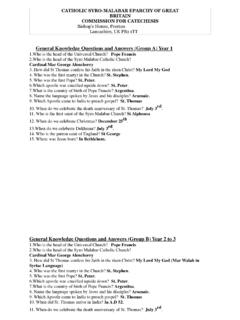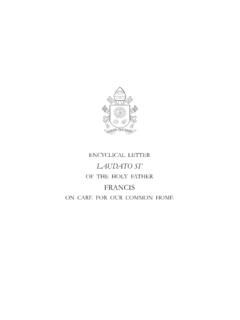Transcription of A Catholic Perspective on Climate Change
1 Drought and food production in Ethiopia. Courtesy Catholic Relief Services ( Climate Change and Global Solidarity toward a Sustainable Energy Future Policy Brief, September 14, 2015).A Catholic Perspective on Climate ChangeBY JOHN COLE AND FRANK INCROPERA2 A Catholic Perspective ON Climate CHANGECONTENTS1. CATHOLICISM AND THE NATURAL ENVIRONMENT ..32. GLOBAL WARMING: NATURAL AND HUMAN AGENTS .. Rising Temperatures .. The Global Energy Budget .. Greenhouse Gases And More ..53. Climate Change : EFFECTS ON HUMANS AND THE PLANET ..64. WHAT CAN BE DONE? .. Mitigation .. Adaptation .. History of Climate Change Policy ..85. WHAT CAN WE DO AS EXPRESSIONS OF OUR FAITH? ..96. AN ETHICAL AND RELIGIOUS IMPERATIVE ..11 CITATIONS ..13 ENDNOTES ..14A Catholic Perspective ON Climate Change 31. CATHOLICISM AND THE NATURAL ENVIRONMENT[H]ow can we separate, or even set at odds, the protection of the environment and the protection of human life, including the life of the unborn?
2 Pope Benedict XVI, Address to the Diplomatic Corps, January, 11, 2010I should like to address directly my brothers and sisters in the Catholic Church, in order to remind them of their serious obligation to care for all of creation. The commitment of believers to a healthy environment for everyone stems directly from their belief in God the Creator, from their recognition of the effects of original and personal sin, and from the certainty of having been redeemed by Christ. Respect for life and for the dignity of the human person extends also to the rest of creation, which is called to join man in praising God (cf. Ps 148:96). Pope Saint John Paul II, World Day of Peace Message, No. 6, January 1, ecological crisis is .. a summons to profound interior conversion. It must be said that some committed and prayerful Christians, with the excuse of realism and pragmatism, tend to ridicule expressions of concern for the environment.
3 Others are passive; they choose not to Change their habits and thus become inconsistent. So what they all need is an ecological conversion , whereby the effects of their encounter with Jesus Christ become evident in their relationship with the world around them. Living our vocation to be protectors of God s handiwork is essential to a life of virtue; it is not an optional or a secondary aspect of our Christian experience. Pope Francis, laudato si 217 The last three Popes have each called Catholics to protect our environment God s creation as an integral part of our duty as Christians to protect life. Each gives voice to an authentically theological and conservative tradition of protecting the environment. Pope Francis call to ecological conversion is a call to turn away from the aspects of modern society that mistreat life in all forms in the pursuit of consumption, and to turn toward protection of God s creation in the service of our fellow booklet considers what Catholics might do in response to this call in the context of Climate Change .
4 It asks what we owe our grandchildren and their grandchildren and what we owe our fellow man, for in the Climate Change context everyone on earth is truly our neighbor. It begins by examining the evidence supporting the existence of Climate Change and its human origins. It then addresses the consequences of Climate Change and actions that we, as Catholics, can take to curb them. Lastly, it considers how these actions align with the whole of church teaching and our Catholic tradition to form an ethical and religious is clear from the foregoing quotes, Pope Francis landmark encyclical on the environment, laudato si , did not arise in isolation, but aligns with nearly 45 years of papal teaching on the A key tenet throughout this period is that Creation (nature) and its bounty should be used for the benefit of all humankind, but with good stewardship and options preserved for future If we accept that creation is a gift from God that must be nurtured and used for the benefit of all, how should we view Climate Change ?
5 The church s answer is clear: Climate Change is a serious environmental problem with significant moral Pope Francis outlines this unequivocally in laudato si ( 23), where he states that: The Climate is a common good, belonging to all and meant for all. At the global level, it is a complex system linked to many of the essential conditions for human 4 A Catholic Perspective ON Climate Change life. A very solid scientific consensus indicates that we are presently witnessing a disturbing warming of the climatic system.. Humanity is called to recognize the need for changes of lifestyle, production and consumption, in order to combat this warming or at least the human causes which produce or aggravate it. It is true that there are other factors (such as volcanic activity, variations in the earth s orbit and axis, the solar cycle), yet a number of scientific studies indicate that most global warming in recent decades is due to the great concentration of greenhouse gases (carbon dioxide, methane, nitrogen oxides and others) released mainly as a result of human activity.
6 Concentrated in the atmosphere, these gases do not allow the warmth of the sun s rays reflected by the earth to be dispersed in space. The problem is aggravated by a model of development based on the intensive use of fossil fuels, which is at the heart of the worldwide energy system. Here, again, Pope Francis echoes his predecessors. For example, Pope Benedict XVI said in a Letter of His Holiness Benedict XVI to the Ecumenical Patriarch of Constantinople on the Occasion of the Seventh Symposium of the Religion, Science and the Environment Movement, 2007, that: Preservation of the environment, promotion of sustainable development and particular attention to Climate Change are matters of grave concern for the entire human family. Pope Benedict XVI underscored this in his encyclical Caritas in veritate,4 noting specifically that ( 51): The Church has a responsibility towards creation and she must assert this responsibility in the public sphere.
7 Because some dispute the factual basis for the foregoing statements, it is reasonable to ask whether Pope Benedict XVI and Pope Francis have it right. Is the Earth warming, and if so can it be attributed to human activities? What are the likely consequences of such warming?2. GLOBAL WARMING: NATURAL AND HUMAN RISING TEMPERATURESYes, the Earth is warming! In fact, over the last century, it s been warming more than ten times faster than at any other period since the last ice age, 12,000 years ago. Termed the temperature anomaly, the following graph shows the variation in the Earth s average land-surface temperature over a 250-year period relative to the mean value over the 30-year period from 1950 to 1979. The gray band, which reveals the range of uncertainty in the data, decreases over time due to advancements in measurement procedures, and confidence in the results is affirmed by convergence of data independently obtained by four different groups.
8 Similar results are obtained for the average temperature over the world s oceans and for the combined land-ocean surface temperature (BEST, 2015).The data are clear. Since the late 19th century, the Earth s temperature has been increasing, with much of it occurring over the last 40 years. And it continues to increase. To what can we attribute this warming? Is it due to human activities? Or, is it due to natural variability? To answer this question, we must consider energy flows into and out of the Catholic Perspective ON Climate Change 5 Global decadal moving average land temperature relative to the 1950-79 mean. From Berkeley Earth Surface Tem-perature Project ( ). THE GLOBAL ENERGY BUDGETAs shown in the following sketch, energy enters the Earth s atmosphere as short-wave solar radiation, some of which is reflected back to space.
9 Energy leaves the atmosphere as long-wave radiation from the Earth s surface and the atmosphere itself. If inflow exceeds outflow, the Earth warms; if the inverse is true, it cools. If inflow is balanced by outflow, Earth s average temperature remains can be said with confidence that recent warming of the Earth is not due to changes in the incoming solar radiation. Changes in the Earth s orbit about the Sun and in its tilt affect solar radiation received by the Earth, but only over periods of 40,000 to 100,000 years, well in excess of the 100 years of current warming. If there is no Change in energy inflow, could increasing temperatures be due to a reduction in outflow, and if so, what could cause the reduction? GREENHOUSE GASES AND MOREO nset of the Industrial Revolution in the 18th century marked the emergence of fossil fuels, which have since been critical to global economic development and today comprise more than 80% of the world s primary energy supply.
10 From coal to petroleum and natural gas, these fuels have done much to elevate living standards, particularly in developed nations of the West and more recently in developing nations of the Far East and Southern Hemisphere. But, fossil fuels are hydrocarbons and, when burned, carbon is released to the atmosphere as carbon dioxide (CO2), where it remains until it is absorbed by plants and the oceans. Since CO2 is 6 A Catholic Perspective ON Climate Change absorbed more slowly than it is released, it accumulates in the atmosphere, where it can remain for following graph tracks the progress of CO2 accumulation in the atmosphere from 1959 through 2015 (NOAA, 2015). The red saw-tooth pattern reflects a decrease in concentration during the spring/summer months due to plant growth in the Northern Hemisphere and an increase due to plant decay over the winter months.


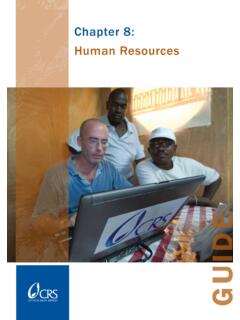
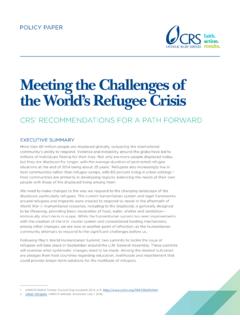






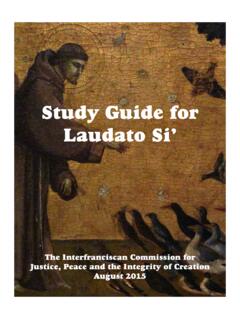
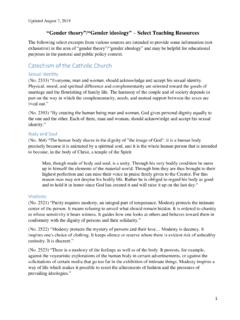
![A Summary of Catholic Social Teaching[2] - Magis Center](/cache/preview/5/7/1/5/f/b/7/6/thumb-5715fb7683ae054713e2ce36545841f7.jpg)
